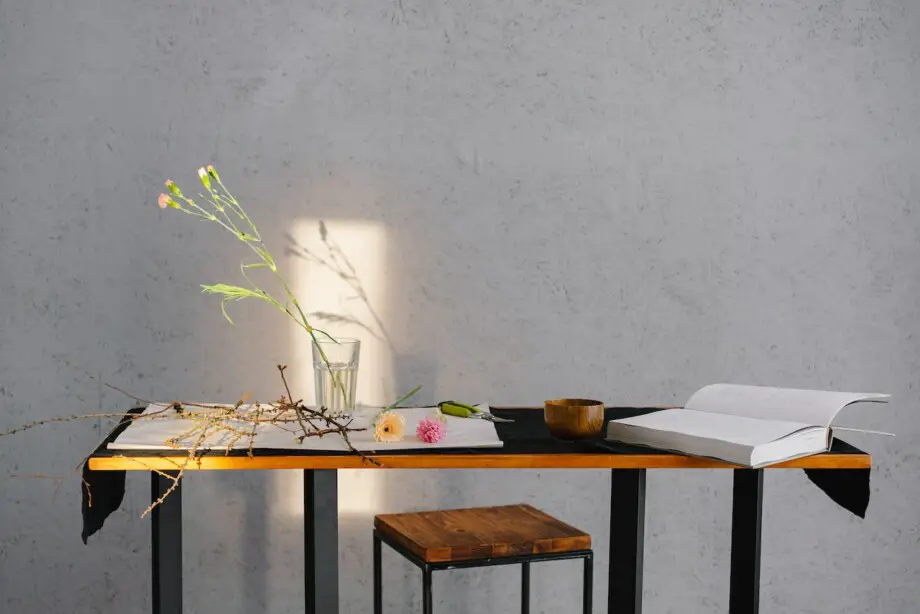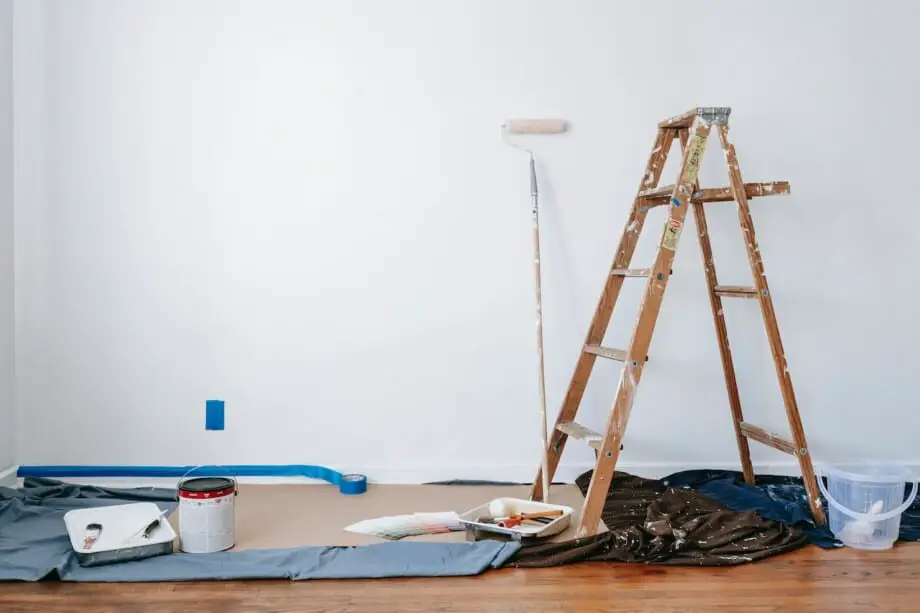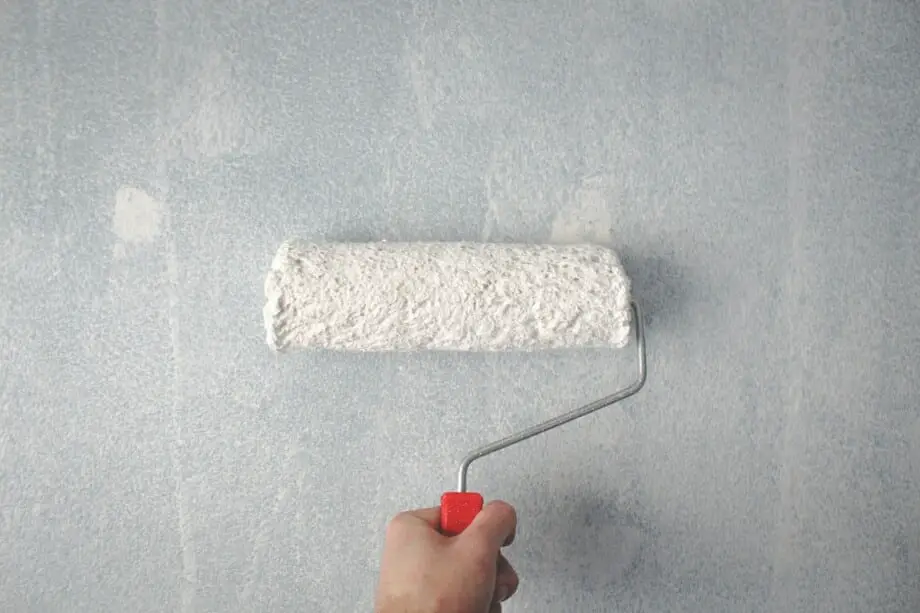Done painting the interior and exterior walls? It’s time to finish the revamping process and get done with the furniture. With years of painting experience, I know all the paint hacks that helped me save money. You can benefit from it, too, and keep saving for your dream vacation or the car you’ve always wished for!
You can use wall paint on wood or wood furniture; however, you must thoroughly prep and prime the surface. Acrylic wall paints work best on wooden furniture, while oil-based wall paints are great for painting over metallic furniture.
Wall paints are the best alternatives to specialized furniture paint. So if you have leftovers from when you last painted your house, this is your sign to bring out those buckets and show some creativity on your furniture. However, you must ensure that you are using the correct techniques so that the paint doesn’t chip off easily from the surface.
Wall Paint Vs. Furniture Paint
Is wall paint the same as furniture paint? The answer is NO!!
As the name suggests, wall paints are specialized paints manufactured on interior and exterior walls. Depending on the base type, their usage can also be extended to painting doors and windows.
On the other hand, furniture paint is specialized in painting home furniture. It contains synthetic resin, which is often not present in wall paint. Furniture paints are designed to adhere to surfaces like wood and metal, whereas the adhesion for wall paints is specified to concrete and bricks.
The color scheme of both the paints varies greatly since walls are usually painted with lighter colors, and the furniture is generally dark. You will find numerous color options for wall paints but furniture paints are limited and mostly revolve around natural wooden colors.
Both wall and furniture paints can range from matte to glossy finish so you can choose them per your preference.
| Wall Paint | Furniture Paint |
|---|---|
| Wide variety of colors | Limited colors are available |
| Wall paints are easily removable | You cannot wash all furniture paints |
| Easy application of paint | Requires hands-on techniques to paint |
| Wall paints do not have synthetic resin | Synthetic resin is present |
How to use wall paint on wooden furniture?
Most of the home furniture is made up of wood. The royalty in beds, cupboards, dressers, and tables comes from the finest woods crafted with precision.
However, wooden furniture may lose its charm over time, calling for a paint coat.
If it is your first time painting wooden furniture, here is a detailed guide on how you can go about it.
Step 1 – Clean the furniture
Before painting your wooden furniture, you must thoroughly clean its interior and exterior. This is because leftover dirt or grime compromises the paint’s adhesive power. This will eventually cause the paint to peel off very soon.
We recomment that you scrub the entire surface with a sponge, and use stain remover where required.
Once you are done cleaning, ensure the wood surface is dried before moving on to the next step.
Step 2 – Scrape off old paint
Your old furniture will probably have traces of half-chipped paint. So the next step is to scrape it off before you start sanding it. Use a metallic scraper for this purpose, as it will help you to get rid of most of the paint.
Step 3 – Time to sand it up
Once you are done with the scraping part, next in line is sanding. Begin sanding with 60-grit sandpaper. Apply gentle, even pressure so that any surface inconsistencies are removed. You might also need a sanding sponge to cover areas that are not easily accessible. Sanding will also scrape off any remaining paint particles from your furniture.
Grab a sand paper that suits is the right fit for your furniture. On most furnitures, sand papers ranging from 120 grit through 220 grit works best. However, higher levels upto 600 grit can be used for specific types as well.
Step 4 – Patch up the cracks
It would be best if you moved on to mend the cracks. If your furniture has nail holes or damages, you must patch them up first. Then, use wood putty to fill up the holes and gaps in the wood. Refer to the instructions provided on the package regarding the drying time of the product.
Step 5 – Sand it again
Once the wood filler has dried completely, sand the surface again. This time, use 320 grit sandpaper and continue with even strokes. The purpose of sanding again is to provide an ultrafine, smooth finish to the wood and a uniform surface for painting.
Wipe down the sawdust with a tack cloth before you prime and paint.
Step 6 – Apply primer
Apply two to three coats of primer to have a solid paint base. The paint will not adhere properly to the wood surface without the primer and will chip off at the slightest pressure. You will also require multiple coats, as the wood absorbs some paint.
The key here is to get a primer suitable for the type of paint you will use and apply it before you apply it.
Step 7 – Apply the first coat of paint
After the primer has dried completely, apply the first coat of your paint. Make sure you spread thin, even coats, instead of thick ones. Use a foam roller for this purpose, as it provides better application than bristle brushes. For non-flat areas, you can use a foam brush too.
Step 8 – Sand in between coats of paint
Wait for the paint to dry completely after applying the first coat. You can also speed up the drying process.
Once it has dried, then you must sand the surface again. Sanding after every coat of paint smoothens the texture and ridges created while painting. Move the sandpaper quickly and lightly, so you do not scrape the paint off. Wipe off the dust before moving on to the next coat.
Special Note: Brush in the same direction as the wood grain
All brush strokes should be in the same direction so your final coat is clean and solid. Painting along the wood grain gives off a professional look to your work.
Wall Paint on Metallic Furniture.
Metal is prone to oxidation and rust, so special paint is manufactured for painting metal surfaces. It is not recommendable to use interior or exterior wall paints on metal furniture since they do not contain essential ingredients to protect against rust. They will crack and peel off very soon, leaving behind ugly streaks.
However, if you have some leftover wall paint and wish to utilize the stuff, these are a few following points that you must ensure for the success of your plan.
- You can only use wall paint on metallic furniture after thorough cleaning and priming.
- After prepping the surface, it is highly recommended to use oil-based exterior paint.
- Even though wall paint will not last much on metallic furniture, this can be a temporary solution for a year or two.
- Take great care of your newly painted metallic furniture, making it worth the time and energy spent painting it.
- Using wall paint with proper steps and care will surely make your furniture appear just as new.
Wall Paint on Plastic Furniture.
Besides wood and metal, some of our furniture is made of plastic, such as chairs and small storage boxes.
I recommend replacing plastic furniture after it seems worn out or if it doesn’t go with the outlook of your revamped room.
Wall paint is not meant to be used on plastic furniture. If you’re persistent about painting plastic furniture, using wall paint will be a waste of money.
Cleaning the chairs with ammonia solution to get rid of molds, followed by prepping, priming, and the paint application, will make the plastic accessories look worse. Not only will you waste the paint you could use elsewhere, but your plastic furniture and precious time.
The only paint that can be used on plastic chairs is spray paint, which doesn’t require extra work. Unfortunately, the spray paint will fade away if furniture like chairs is exposed to the sun.
How long does wall paint last on wood?
Wall paints are specialized to adhere to surfaces like concrete, bricks, stone, or clay. Wood has an entirely different texture; thus, wall paints will not adhere efficiently to wood. However, you can use wall paint on wooden furniture after it has been prepped and primed using the method mentioned above.
Appropriate sanding and prepping can ensure that the paint lasts 5 to 7 years on a wooden surface. The duration of how long the paint will last on the surface depends on the quality of the color used. Low-quality paints can fade away or begin chipping off early, and great-quality paints can even exceed the limit.
You must maintain the paint on wooden surfaces and repaint wooden furniture every 5 to 6 years. Taking good care of your paint is essential to make it last longer. Thus, you mst ensure that you’re regularly cleaning the surface with a mildly wet cloth followed by a dry one. Also make sure to prevent your furniture from direct exposure to harmful sun rays.
Frequently Asked Questions
What kind of paint do you use on furniture?
Depending on the results and aesthetics you need, you can choose latex, chalky, acrylic, oil, or milk paint for your furniture. Each kind of paint comes with its advantages as well as disadvantages. So if you’re wondering what paint to use on furniture, you must go with acrylics on wood but oil-based paints for metallic furniture.
Can you use regular paint on wood?
Yes! You can use regular paint on wood after the wood is adequately primed. Traditional acrylic paints are the most common type used for painting wooden furniture. Before applying the paint coat, you must ensure that you prime and seal the surface.
Can I use regular paint to paint a dresser?
Yes, you can certainly use regular paint to paint a dresser. If you have leftover wall paint, it is one of the best ways to utilize the material and not let it go to waste. In addition, if you know how to use wall paint on furniture, and are aware of all the prepping and priming techniques, regular paint on the dresser will do just as well as specialized furniture paint.
Does wall paint work on furniture? – Summing it up
Wall paint is the number one alternative to specialized furniture paint. You can achieve great results with a little extra effort of deep prepping and priming the furniture surface. Using flat wall paint on furniture is a little time-consuming. However, it saves you a lot of money, so the two balance out.
If you’re painting wooden furniture, make use of the acrylic paints, however, if your furniture is metallic, ensure using oil based paint for optimal results.
No more furniture to paint? Have a look at how you can use leftover wall paint on canvas!


